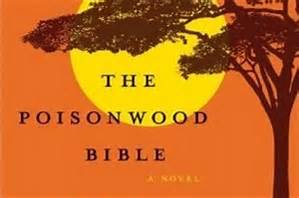Misinterpretations Of God's Wisdom

Barbara Kingsolver’s novel ‘The Poisonwood Bible’ has some interesting insights into this theme. It is the tale of a Baptist missionary family with four young daughters in the Congo, during the time of this country’s independence struggles in the sixties. The book contains some fine nuggets of wisdom, for example when on one occasion two people are talking about the Bible and one of them says: ‘Well, it’s every bit God’s word, isn’t it?’
The other one replies: ‘God’s word, brought to you by a crew of romantic idealists, in a harsh desert culture aeons ago, followed by a chain of translations two thousand years long.’ After a while, the second speaker adds: ‘Think of all the duties that were perfectly obvious to Paul or Matthew in that old Arab desert, that are pure nonsense to us now. All that foot-washing for example; has it really to do with God’s glory or just to keep the sand out of the house?’
In another place Barbara comes to the conclusion: ‘Everything you’re sure is right can be wrong in another place [and time].’ Apart from the points she raises, there is yet something else to be considered in connection with the Bible teachings. They have gone through an evolution of their own in the course of the book’s history. Time and again they have been translated from one language into another. They were used and also – it is necessary to face up to this here – abused for the manipulation of the great mass of people. Thus it was inevitable that misunderstandings and misinterpretations – intentional and otherwise – of all kinds thus crept into the holy texts.
One of the most striking example of this is the one from St. Matthew 19:24 ‘And again I say unto you, it is easier for a camel to go through the eye of a needle, than for a rich man to enter into the kingdom of God.’ In ‘The Holy Bible – translated by The Reverend Dr. George M. Lamsa’ this appears as follows: ‘Again I say to you, it is easier for a rope to go through the eye of a needle than for a rich man to enter into the kingdom of God.’ In the Aramaic language, the one the Master Jesus would probably have spoken if he had ever walked in our midst, the Arabic word used in this quote is ‘gamla’, which can mean either rope or camel.
The Bible was translated many times from one language into another; from the original Aramaic texts almost certainly into Greek, then into Latin and from there into all modern language versions. That’s why they all contain the same strange quote about the camel that is likely to have puzzled theologians and laypeople alike, ever since its first appearance. I feel that the error about the camel must have crept into the Bible in one of its earliest translations, maybe even the very first one. It is known that Martin Luther, 1483-1546, the father of the Reformation in Germany, translated his Bible into German from the Greek edition of Erasmus.
Luther’s English counterpart was William Tyndale, sometimes spelled Tindale. He was a priest and scholar, who lived ca. 1484-1536 and translated the Bible into the early modern English of his day. Although numerous partial and complete English translations had been made from the 7th century onward, Tyndale was the first to take advantage of the new medium of print, which allowed for its wide distribution. In October 1536, he was killed by strangulation and then burned at the stake. However, his efforts were rewarded, because much of his work eventually found its way into the King James Version, which – though the work of 47 independent scholars – is based primarily on his translations. Incidentally, in spite of the fact that Luther had also been persecuted, he died of natural causes.
Recommended Reading:
• ‘Light and Darkness’
• ‘The Lamsa Bible’ in Further Reading
* * *
This article is a chapter from ‘Astrology On The Healing Journey’.
If it has whetted your appetite to read more, please follow the link below:
‘Astrology On The Healing Journey’
![]()
